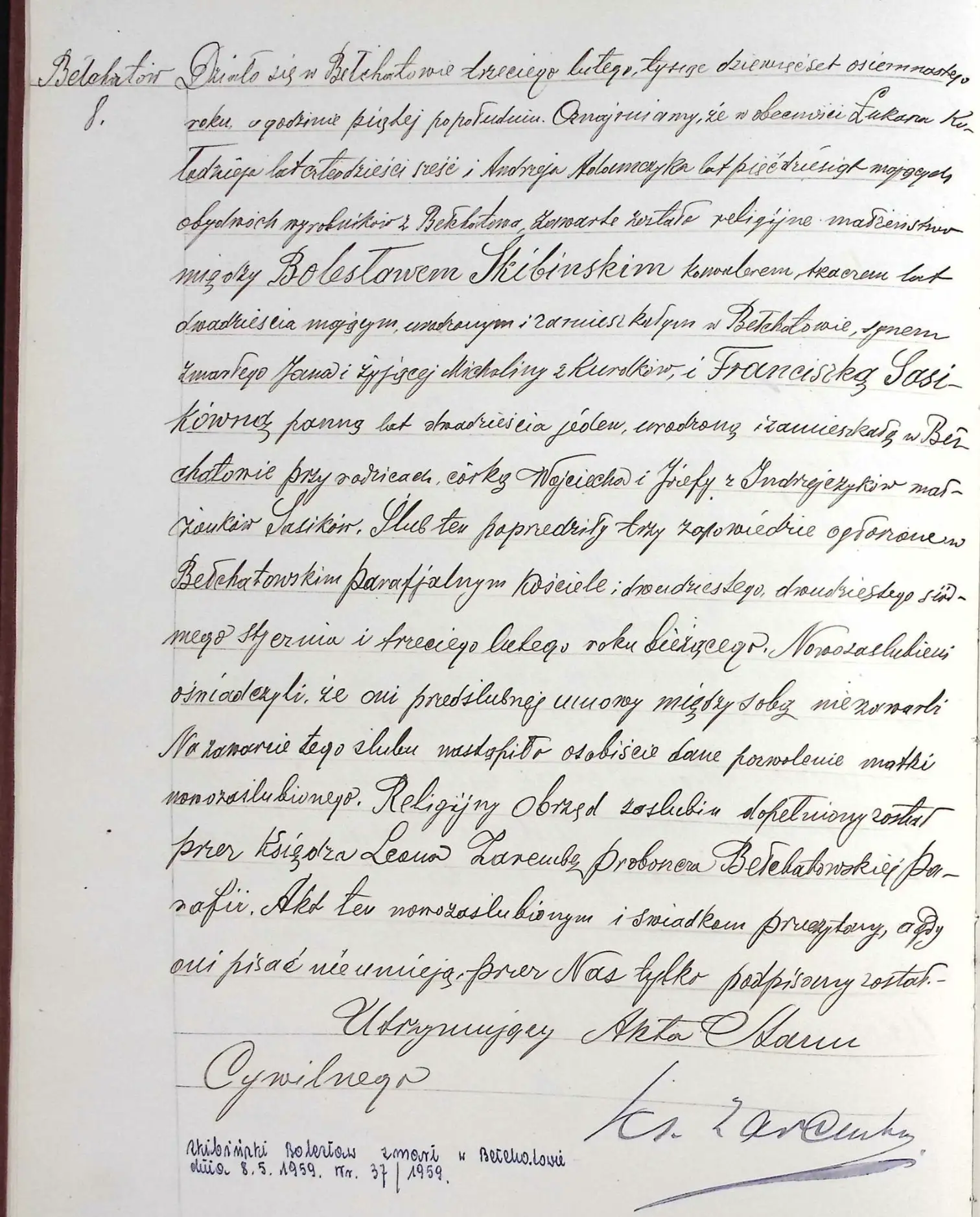
Recognizing Patterns in Polish Parish Records
Published September 20, 2025 | 3 min read
Recognizing Patterns in Polish Parish Records
For genealogists, parish acts (metryki) are priceless — but at first sight, they can feel impenetrable. Pages filled with dense cursive and long legal formulae can hide the very details you’re searching for. The key is to understand that these records follow predictable patterns. Once you learn to recognize those structures, it becomes much easier to extract essential information about your ancestors.
Birth and Baptism Records (Akta urodzeń / chrztów)
Typical schema includes:
- Introductory formula (Działo się we wsi…)
- Father (or witness) presenting the child (Stawił się…)
- Date and time of birth and baptism
- Child’s name
- Parents’ names (with mother’s maiden name)
- Godparents/witnesses
Example (ca. 19th century):
Działo się we wsi Polkowice dnia dwudziestego szóstego czerwca tysiąc osiemset trzydziestego roku o godzinie piątej wieczór. Stawił się Jan Nowak, lat trzydzieści cztery mający, mieszczanin zamieszkały w Polkowicach… i okazał nam dziecię płci żeńskiej, urodzone dziś o godzinie dziesiątej przed południem z jego małżonki Anny z Wójcickich.
Marriage Records (Akta małżeństw)
Typical schema includes:
- Introductory legal phrase with date and place
- Names, ages, and status of bride and groom (bachelor, widow, etc.)
- Parents’ names and residence
- Mentions of banns (zapowiedzi)
- Witnesses
- Final statement of the marriage
Example (ca. 1820):
Roku tysiąc osiemset dwudziestego dnia dwudziestego listopada, przed nami proboszczem Polkowickim… stawili się Mateusz Kowalski, kawaler, lat dwadzieścia cztery mający, syn Franciszka i Rozalii Kowalskich, oraz Rozalia Cegielska, panna, lat dwadzieścia jeden mająca, córka nieżyjących już Grzegorza i Marianny Cegielskich. Po trzykrotnych zapowiedziach i wobec świadków zawarte zostało małżeństwo…
Death and Burial Records (Akta zgonów)
Typical schema includes:
- Introductory phrase with date and place
- Witnesses reporting the death
- Name of the deceased
- Age and marital status (e.g., widower)
- Sometimes occupation, parents, or cause of death
Example (ca. 1830):
Działo się we wsi Polkowice dnia piętnastego października tysiąc osiemset trzydziestego pierwszego roku o godzinie dwunastej w południe. Stawili się Paweł Krajewski lat pięćdziesiąt dziewięć mający i Adam Nowak lat dwadzieścia osiem mający, gospodarze zamieszkali w Polkowicach, i oświadczyli, iż dnia wczorajszego umarł Jakób Nowak, lat siedemdziesiąt mający, wdowiec.
Why Patterns Matter
Even though parish acts appear in different languages (Latin, German, Russian, Polish), the structure of the records is surprisingly consistent. Each entry has an opening formula, a section naming individuals, and a closing with witnesses and signatures. Recognizing these repeating elements allows you to focus on the critical genealogical details: names, dates, relationships, and locations.
Final Thoughts
Polish parish records may look overwhelming, but once you know the schemas of birth, marriage, and death acts, they become readable. The repeated formulae are like signposts, guiding you straight to the vital facts about your ancestors’ lives.
